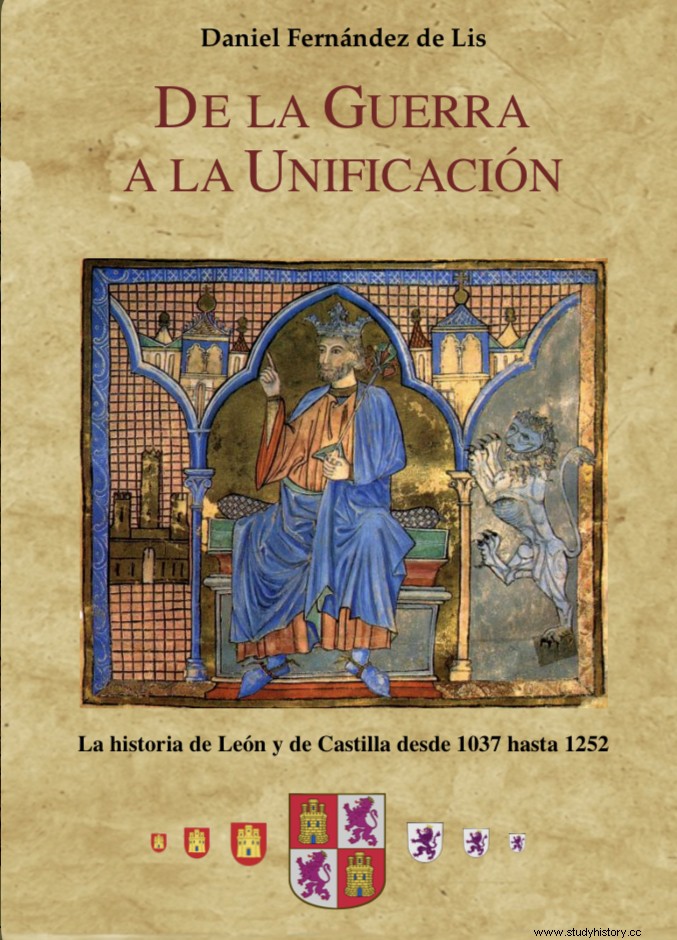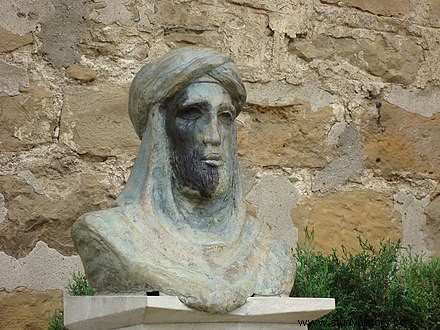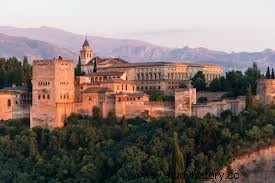Entry extracted from the book «From war to unification. History of León and Castile from 1037 to 1252». 
The Almohad empire, which had penetrated the Peninsula in the mid-twelfth century and by 1172 had taken over all the domains that had belonged to their Almoravid predecessors, suffered a severe coup in July 1212 at the Battle of Las Navas de Tolosa, where they were soundly defeated by the combined forces of the kingdoms of Castile, Aragon and Navarre.
This confrontation marked a turning point in the balancing act between Christians and Muslims in the Iberian Peninsula. An aspect that demonstrates the importance of what happened in Las Navas is highlighted by Martínez Diez, who refers to the abandonment after the battle by the Muslims and the taking by the Christians of the fortresses of Vilches, Ferral, Baños and Tolosa.
These four fortresses will forever remain in Christian hands, never falling back into Muslim hands. With them Castile came to control the gates of Andalusia; The Castilian soldiers would never again find enemies that bothered them in the steps of Muradal or Losa.
Even so, the Almohads continued for several years to maintain their positions and strength in al-Andalus. It would take an exceptional circumstance, a succession crisis in the Almohad empire to precipitate the decomposition of its rule in the Peninsula. A new caliph, Yussuf, had succeeded the one defeated in Las Navas, the Miramamolín, who had been assassinated in 1213. Although this caused some instability in the Almohad empire, it did not seriously affect al-Andalus, where there were no major Christian conquests and where the peninsular Muslims continued to fight with bravery and good spirits, which shows that they did not give everything up for lost despite the disaster of Las Navas de Tolosa.
But when Yussuf died without issue in 1224, a merciless struggle for succession within the royal family began which, as far as the Peninsula was concerned, was going to end with the Almohad rule in al-Andalus in just a few years. There were two effects that this contest for the caliphal title was going to produce in Andalusian territory.
- On the one hand, important squares that had been symbols of Muslim rule fell one by one into the hands of the Christian kingdoms. Cáceres did so in 1229, Mérida and Badajoz in 1230, and the great capital of the almighty Umayyad Caliphate, Córdoba, surrendered to Ferdinand III, King of Castile and León, in 1236.
- And on the other hand, different rulers of territories that had belonged to the Almohad empire realized that it was on its last legs and decided to try to form their own independent domains in the Peninsula. Thus, in the years following 1224, the figures of al-Bayyasi, known as el Baezano for having his center in that locality, Ibn Hud, with his base of operations in the Murcia area, and Muhammad ibn Nasr (also known as al -Ahmar), who was expanding his domain from his fortress of Arjona.
Of these three warlords, two were victims of internecine fighting between the peninsular Muslims. Al-Bayyasi was assassinated in Córdoba in 1226, accused of supporting a campaign over al-Andalus by the King of Castile, Ferdinand III, with supplies. Ibn Hud suffered a similar fate in Almería in 1238. His initial prestige had been tarnished by several defeats on the battlefield against the Christians and by various truces that he signed with Fernando III in exchange for the payment of a colossal amount of money. , how could it be otherwise, would come out of the taxes of his subjects.

A different fate awaited the third of these Andalusian leaders, Muhammad ibn Nasr, who gradually expanded his area of influence from Arjona and took over Jaén and Porcuna. After the assassination of Ibn Hud he also controlled Granada and Almería. But when he tried to do the same with Seville, the inhabitants of it requested the protection of the Almohad caliph of Marrakech, thus stopping his expansion.
Initially Ibn Nasr alternated a policy of pacts with Ferdinand III (he promised not to help Córdoba during the siege that preceded his surrender) with military confrontations with the Christians. Thus, at the end of 1243 or beginning of 1244, taking advantage of the fact that the majority of the Castilian army had gone to Murcia under the command of the infante Alfonso (the future Alfonso X), Ibn Nasr attacked the Castilian possessions to the north of Jaén, achieving a victory over a Christian contingent led by Ferdinand III's half-brother, Rodrigo Alfonso, in Martos.
Ferdinand III went in person to meet this challenge and ordered the first attack to be directed against the fortress from which he Ibn Nasr had started his career, Arjona. Before the monarch arrived, his forces had devastated all the surroundings and besieged the village. Fernando's presence was enough for the defenders to surrender Arjona and some nearby fortresses.
The decisive moment in the history that concerns us occurred in 1245 when Fernando III focused his campaign on a new attempt to take Jaén, an objective that had resisted him in various sieges , which had caused a high cost in human lives and resources for its conquest. On this occasion, the defense of the square was the responsibility of Muhammad ibn Nasr.
For the siege that began in July, which was preceded by the pertinent task of devastating the surroundings of the city and the entire fertile plain towards Granada, he summoned his sons Fadrique and Enrique and he also called Alfonso to join his forces once he had taken Cartagena.
The siege lasted all winter, in very harsh weather conditions for both defenders and besiegers. At the end of February 1246, Ibn Nasr, seeing that this time the Christians were willing to continue the siege as long as necessary and that they would not raise the siege again as on previous occasions, was convinced of the futility of resistance and he agreed with Fernando III the surrender of the square, with the usual condition that its inhabitants could sell their goods and leave the city. The scenes that took place in Jaén once it was handed over to the Castilians were not very different from those that had taken place ten years earlier in Córdoba.
But the pact between Ferdinand III and Muhammad ibn Nasr went even further. The lord of Granada agreed to become a vassal of the king of Castile and León, in what was known as the Pact of Jaén. Ibn Nasr kissed the hand of his new lord and swore allegiance to him as his vassal for all his possessions, which he symbolically handed over to Fernando, who returned them later, with the exception of Jaén.
That is to say, that Muhammad ibn Nasr would since then own the kingdom of Granada as a feud granted. This included the obligation to be faithful to his lord Fernando de he, to collaborate militarily and go to his Courts when required to do so, and to pay him a tribute of one hundred and fifty thousand maravedis a year. The duration of this pact was set until the year 1264 and allowed Ibn Nasr, now Muhammad I of Granada, to focus on consolidating his position at the head of this new kingdom. The Pact of Jaén is rightly considered as the founding milestone of the domain to which ibn Nasr was going to give its name, the Nasrid kingdom of Granada.

The importance of these events for the Castilian monarch and Leonese is demonstrated by the fact that since April 1246 some of the documents emanating from its chancellery are dated "in the year in which the king of Granada became a vassal of the king of Castile and kissed his hands and as a sign of dominion handed over Jaen».
And it is that Fernando III not only obtained an important source of income for his needy coffers, but by pacifying Granada and Jaén he had his hands free and gained an important ally for the next and fundamental objective of it. An objective that he would never return to Castile and in which Muhammad ibn Nasr would also play a role:the conquest of Seville. But that's another story.
Image| Wikimedia Commons.
González Jiménez, M. (2011). Ferdinand III the Saint. The king who marked the destiny of Spain. José Manuel Lara Foundation. 2nd edition.
Manzano Moreno, E. (2015). History of Spain. Medieval Times, Volume 2 . Madrid. Criticism. Editorial Marcial Pons.
Álvarez Palenzuela, V. Á. (Coord). (2017). History of Spain in the Middle Ages . Ariel. 7th impression.
Martínez Diez, G. (2007). AAlfonso VIII, King of Castile and Toledo (1158-1214). Gijon. Trea Editions. 2nd edition.
Puente López, J.L. (2014). Kings and queens of the Kingdom of León. Lion. Edilesa. 3rd edition.
